What is patellofemoral pain syndrome?
Patellofemoral pain syndrome (PFPS) is a term to describe pain that occurs around your kneecap, or patella. It is also known as “runner’s knee” or “jumper’s knee.” This condition is more likely to develop if you participate in sports that involve frequent running and jumping, but it can also happen to non-athletes.
Typically, PFPS causes pain and stiffness in the front of the knee that can lead to difficulty with normal activities such as kneeling, squatting, going up and down stairs, and even getting up from a chair or couch.
Anatomy of a knee
The knee is a complex joint consisting of three bones, including the femur (thighbone), tibia (shinbone) and patella (kneecap). Four ligaments connect the femur and tibia. The patella is supported by the patellar tendon, which attaches it to the tibia, and the quadriceps tendon, which joins the kneecap to the quadriceps muscle.
The patella rides in the groove for the kneecap, called the trochlea. Both the patella and trochlea are lined with the thickest cartilage in the body, which provides cushioning and a smooth surface for the knee.
Patellofemoral pain syndrome symptoms
Knee pain from patellofemoral pain syndrome feels like a dull ache over the front of the knee. It comes about gradually over time and is typically related to sporting or aggravating activities. People may experience pain in one or both knees. It is also associated with stiffness and popping, cracking or crunching sounds.
The pain often worsens over the front of the knee with:
- Repetitive knee bending from squatting or climbing stairs
- Sitting with bent knees for significant periods, such as on long car rides or while working
- Changing your training or playing on harder surfaces, such as concrete
- Increasing your activity level or training intensity
- Wearing new or different shoes during physical activity
When to see a doctor
Give your knee a few weeks to rest and avoid activities that trigger the symptoms. If the pain doesn’t go away or gets worse, the best first option is to see your primary care physician. Your primary care provider can determine whether patellofemoral pain syndrome is the cause of your symptoms and recommend a treatment to reduce or stop the discomfort. Once you have exhausted conservative treatments, your provider may refer you to an orthopedic specialist for evaluation and treatment.
Patellofemoral pain syndrome causes
Patellofemoral pain syndrome is often caused by overuse or knee alignment issues, resulting in pain at the front of the knee. Irritation of the bone or soft tissues around the kneecap triggers pain when nerves detect this irritation.
Common causes include:
- Overuse: Repetitive activities like running and jumping, and sports such as tennis or pickleball can strain your knee.
- Increased activity: Sudden changes in activity level, such as training for a race or starting a new workout, put extra stress on the knee, leading to pain.
- Improper footwear: Worn-out shoes, especially with increased mileage, can contribute to discomfort. Replace your shoes every 6 months.
- Change in surface: Switching to harder surfaces like concrete or artificial turf can aggravate knee pain.
Patella maltracking, when the kneecap shifts to one side, can increase pressure on the knee's soft tissues, causing PFPS. Contributing factors include:
- Anatomic issues: Irregular patella shape or alignment can predispose you to PFPS.
- Muscle imbalances: Weak quadriceps or tight hamstrings, along with weak hip and core muscles, can disrupt patella tracking, causing strain on the knee.
Runner’s knee risk factors
Certain factors can increase your chances of developing patellofemoral pain syndrome. Some of these risk factors you can control. Others, however, you can’t change. Understanding the factors that can make patellofemoral pain syndrome more likely to occur can help you protect your knees and reduce your risk. Risk factors for PFPS include:
Age
Patellofemoral pain syndrome is most common in teenagers and young adults and may affect these groups more frequently because of their high sports participation and growing bodies.
High-impact sports and jobs
You’re more likely to develop patellofemoral pain syndrome if you play a sport or work in a profession that requires frequent knee bending and straightening, which stresses the joint.
Sex
Women develop patellofemoral pain syndrome more often than men, possibly because of differences in hormones and body structure. Compared with men, women have wider pelvises and weaker hip muscles, both of which may contribute to knee pain.
Diagnosing runner’s knee
To diagnose patellofemoral pain syndrome, your healthcare provider will likely ask about your knee history, gently press on your knee, and move your leg into different positions. In some cases, imaging tests may be used to help identify the cause of your knee pain.
-
Medical history and exam
Diagnosing runner’s knee typically begins with a physical exam. Your provider will start by reviewing your overall health and gathering information about your symptoms. They’ll want to know:
- What does your knee pain feel like, and which part of the joint does it affect
- When your symptoms started
- Whether you’ve had similar knee pain in the past
- Which activities or situations trigger your knee pain
Next, your physician will perform a physical examination of your knee to check:
- Areas of tenderness on the knee
- Alignment of the hips, knees and ankles when standing
- Stability of the knee
If needed, they may conduct specialized tests that place some gentle force on the knee to better understand the pain.
-
Imaging
Often, a medical history and exam of the knee are all that’s necessary to diagnose PFPS. Your provider may order imaging tests to evaluate the bones and soft tissues in the joint, which can be especially helpful for ruling out other causes of pain. Several different types of imaging can help diagnose runner’s knee.
- X-ray: If imaging is necessary, your provider will likely start with an X-ray. This will look for signs of arthritis and also evaluate the alignment of your knee and patella.
- MRI scan: An MRI is a more sophisticated imaging test that shows soft tissues that include cartilage, ligaments, tendons and muscles, as well as bones.
Patellofemoral pain syndrome treatment
Your provider will decide which treatment makes the most sense for you based on your symptoms, the results of your physical exam and imaging tests, overall health and goals. Treatments range from lifestyle changes and at-home care to conservative treatments and, in rare situations, surgical options.
At-home care and lifestyle changes
In most cases, patellofemoral pain syndrome can be treated without seeing a doctor with simple at-home remedies.
The first line of treating PFPS is to avoid activities that aggravate your knee. This involves identifying the activities that make the joint hurt and temporarily stop doing them. If, for example, running triggers discomfort, try taking a break from running and try an exercise that reduces stress on your knees, such as swimming.
Weight can also play a big role in PFPS. Obesity and weight gain can lead to increased stress and force placed on the patella cartilage and soft tissue. Losing weight can often improve knee pain.
In addition to changing your exercise routine and focusing on weight, you can follow the RICE method to ease knee pain.
- Rest: Rest and avoid aggravating knee activities.
- Ice: Reduce swelling by placing a cold pack in a towel on your knee for 20 minutes a few times each day. Avoid placing ice and cold packs directly on the skin, as this can lead to burns.
- Compression: Manage swelling by wrapping your knee in an elastic bandage or using a compressive sleeve.
- Elevation: Use pillows to elevate your knee above the level of your heart while you’re resting.
Medication
In addition to the RICE method, you can use over-the-counter nonsteroidal anti-inflammatory drugs (NSAIDs). These medications, like ibuprofen and naproxen, help reduce inflammation, which causes pain and swelling. Topical anti-inflammatory medications can also be used on your knee to reduce discomfort. Your primary care physician can help you determine which NSAID is right for you and how long you can safely take it.
Physical therapy
A physical therapist can guide you through stretches and exercises to strengthen the muscles around your knee, particularly the quadriceps, improving flexibility and supporting proper patella movement.
Additionally, you may be advised to use:
- Knee braces: These provide stabilization and support, especially during physical activity, and can help alleviate pain, particularly in the early stages. Talk to your provider for recommendations on the best type for you.
- Orthotics: Custom or over-the-counter shoe inserts can help stabilize your knee, ankle or lower leg. Your provider will determine the best type for you and how often you should use them.
- Taping: Your physical therapist may demonstrate how to tape your knee to alleviate pain and improve your ability to exercise.
Surgery and procedures
Most cases of PFPS can be successfully treated with conservative treatment. However, when the pain persists or is severe, surgery may be the next best option. Surgical treatments include:
- Arthroscopy: The most common surgery for patellofemoral pain syndrome is a minimally invasive surgery with small incisions over the front of the knee. Using these small incisions, a camera and instruments can be used to evaluate the structures inside the knee, repair damaged cartilage, and change the alignment of the patella.
- Tibial tubercle transfer: If minimally invasive surgeries aren’t an option, using an open surgical technique may be necessary. This involves the surgeon repositioning the tibial tubercle where the patellar tendon attaches. This allows for better alignment of the patella with improved tracking.
Locations
We offer several locations for your care, including specialty orthopedic centers in North and Central Texas.

AccentCare - Fort Worth
3880 Hulen St , Fort Worth, TX, 76107

AccentCare Home Health of Brenham
526 W Main St , Brenham, TX, 77833

AccentCare Home Health of College Station
119 Medical Park Lane Ste C, Huntsville, TX, 77340

AccentCare Home Health of College Station
1605 Rock Prairie Rd Ste 206, College Station, TX, 77845

AccentCare Home Health Of Denton
225 W. Mulberry St. Ste A, Denton, TX, 76201

AccentCare Home Health Of Desoto
911 York Drive Ste 203, DeSoto, TX, 75115

AccentCare Home Health Of Fort Worth (Arlington)
700 Highlander Blvd Ste 205, Arlington, TX, 76015

AccentCare Home Health of Huntsville
122 Medical Park Lane B , Huntsville, TX, 77340

AccentCare Home Health of Marble Falls
1100 Mission Hills Dr Ste 100, Marble Falls, TX, 78654

AccentCare Home Health Of McKinney
6800 Weiskopf Ave Ste 100, McKinney, TX, 75070

AccentCare Home Health Of Taylor (Hutto)
567 Chris Kelley Blvd Ste 201, Hutto, TX, 78634

AccentCare Home Health Of Temple
3809 S General Bruce Dr Ste 105B, Temple, TX, 76502

AccentCare Home Health Of Waco
8300 Central Park Dr Ste A, Waco, TX, 76712

AdventHealth Central Texas
2201 S Clear Creek Rd , Killeen, TX, 76549
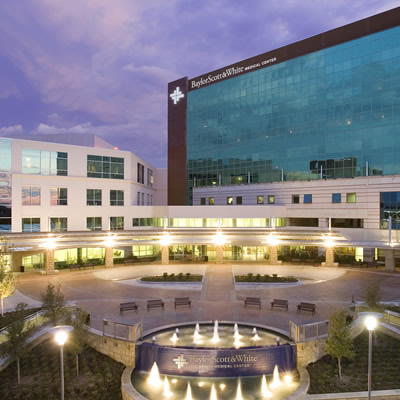
Andrews Women's Hospital at Baylor Scott & White - Fort Worth
1400 8th Ave , Fort Worth, TX, 76104
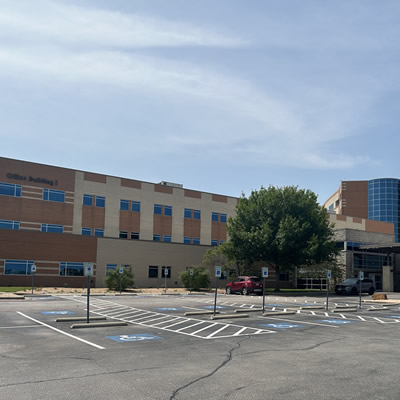
Baylor Scott & White - Hillcrest Infectious Disease Clinic
50 Hillcrest Medical Blvd MOB1, Ste 104, Waco, TX, 76712
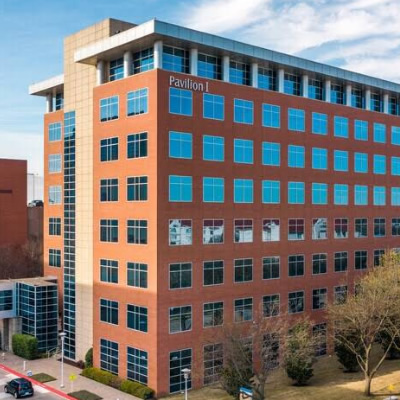
Baylor Scott & White - Plano Brain and Spine Center
4708 Alliance Blvd Pavilion I, Ste 810, Plano, TX, 75093
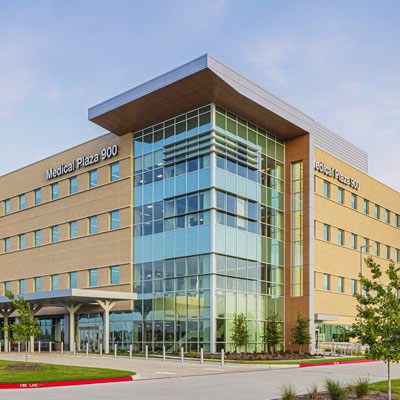
Baylor Scott & White - Texas Brain and Spine Institute
900 Scott and White Dr , College Station, TX, 77845
- Monday: 8:00 am - 5:00 pm
- Tuesday: 8:00 am - 5:00 pm
- Wednesday: 8:00 am - 5:00 pm
- Thursday: 8:00 am - 5:00 pm
- Friday: 8:00 am - 5:00 pm

Baylor Scott & White - Texas Brain and Spine Institute - Huntsville
122 Medical Park Ln Ste A, Huntsville, TX, 77340
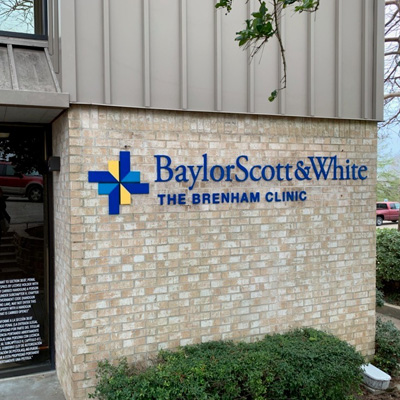
Baylor Scott & White - The Brenham Clinic
600 N Park St , Brenham, TX, 77833
- Monday: 7:30 am - 5:00 pm
- Tuesday: 7:30 am - 5:00 pm
- Wednesday: 7:30 am - 5:00 pm
- Thursday: 7:30 am - 5:00 pm
- Friday: 7:30 am - 5:00 pm

Baylor Scott & White 65+ Clinic
4716 Alliance Blvd Ste 500, Plano, TX, 75093
- Monday: 8:00 am - 4:30 pm
- Tuesday: 8:00 am - 4:30 pm
- Wednesday: 8:00 am - 4:30 pm
- Thursday: 8:00 am - 4:30 pm
- Friday: 8:00 am - 4:30 pm
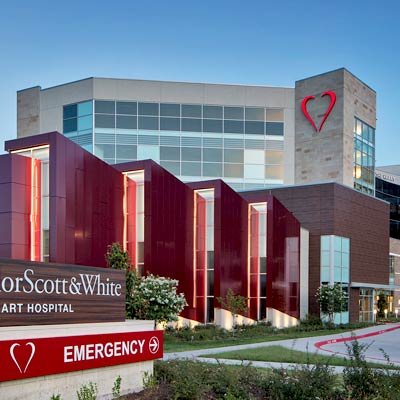
Baylor Scott & White Advanced Cardiac Imaging Specialists
1100 Allied Dr , Plano, TX, 75093

Baylor Scott & White Advanced Cardiovascular and Imaging Consultants
4708 Alliance Blvd Ste 450, Plano, TX, 75093
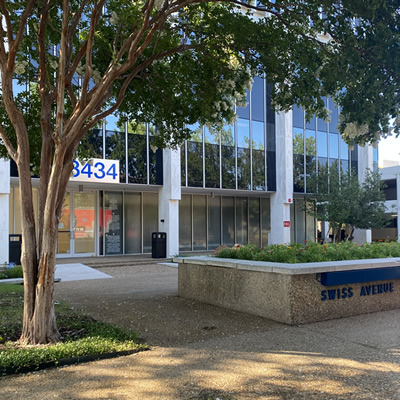
Baylor Scott & White Advanced Digestive Care
3434 Swiss Ave Ste 200, Dallas, TX, 75204
- Monday: 8:00 am - 5:00 pm
- Tuesday: 8:00 am - 5:00 pm
- Wednesday: 8:00 am - 5:00 pm
- Thursday: 8:00 am - 5:00 pm
- Friday: 8:00 am - 5:00 pm

Baylor Scott & White Advanced Heart and Lung Disease Center - Fort Worth
1420 8th Ave Ste 103, Fort Worth, TX, 76104

Baylor Scott & White Advanced Heart Care - Anna
450 N Standridge Blvd , Anna, TX, 75409

Baylor Scott & White Advanced Heart Care - Decatur
2401 S FM 51 Ste 200, Decatur, TX, 76234

Baylor Scott & White Advanced Heart Care - Denton
3333 Colorado Blvd , Denton, TX, 76210

Baylor Scott & White Advanced Heart Care - Idabel, OK
4 SE Avenue A , Idabel, OK, 74745

Baylor Scott & White Advanced Heart Care - Keller (Satellite)
3124 N Tarrant Pkwy Ste 204, Keller, TX, 76177

Baylor Scott & White Advanced Heart Care - McKinney (Satellite)
5236 W University Dr Ste 4450, McKinney, TX, 75071

Baylor Scott & White Advanced Heart Care - Mt Pleasant (Satellite)
1011 N Jefferson Ave , Mt Pleasant, TX, 75455

Baylor Scott & White Advanced Heart Care - Paris
875 S Collegiate Dr , Paris, TX, 75462

Baylor Scott & White Advanced Heart Care - Plano
4716 Dexter Dr Ste 100, Plano, TX, 75093

Baylor Scott & White Advanced Heart Care - Sherman Sycamore (Satellite)
203 E Sycamore St , Sherman, TX, 75090

Baylor Scott & White Advanced Heart Care - Sulphur Springs
601 Airport Rd Ste 110, Sulphur Springs, TX, 75482

Baylor Scott & White Advanced Heart Care – Sherman Highland (Satellite)
300 N Highland Ave , Sherman, TX, 75092

Baylor Scott & White Advanced Heart Failure Clinic - Irving
2001 N MacArthur Blvd Bldg 1, Ste 360, Irving, TX, 75061
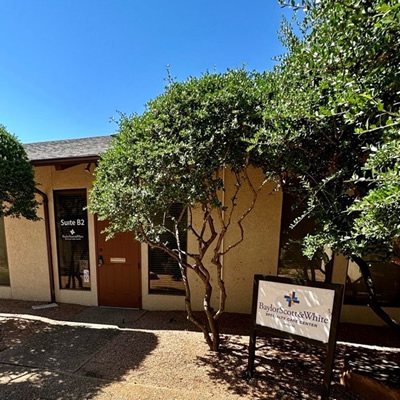
Baylor Scott & White Advanced Heart Failure Clinic - Abilene
1219 E South 11th St Ste B2, Abilene, TX, 79602
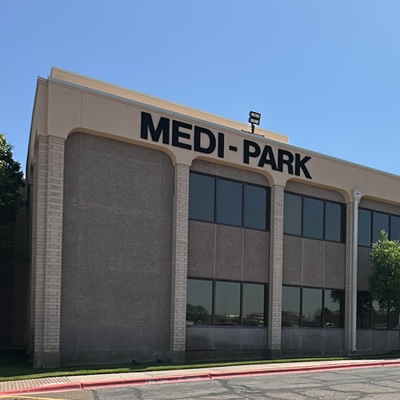
Baylor Scott & White Advanced Heart Failure Clinic - Amarillo
1901 Medi Park Dr Ste 2051, Amarillo, TX, 79106

Baylor Scott & White Advanced Heart Failure Clinic - Dallas
3410 Worth St Ste 250, Dallas, TX, 75246
- Monday: 8:00 am - 4:30 pm
- Tuesday: 8:00 am - 4:30 pm
- Wednesday: 8:00 am - 4:30 pm
- Thursday: 8:00 am - 4:30 pm
- Friday: 8:00 am - 4:30 pm
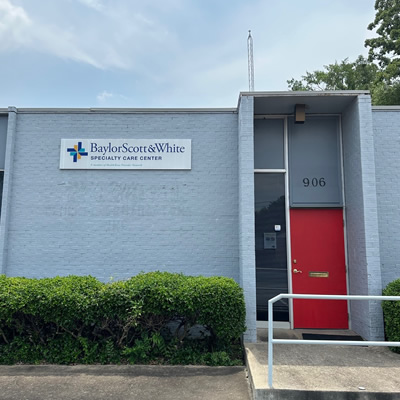
Baylor Scott & White Advanced Heart Failure Clinic - Longview
906 Judson Rd , Longview, TX, 75601
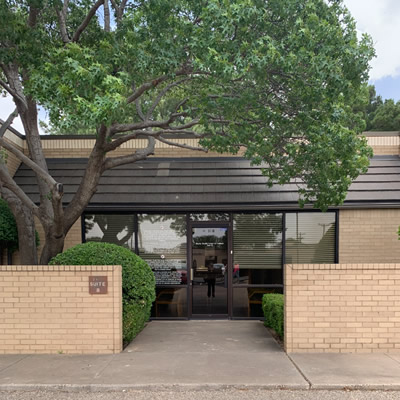
Baylor Scott & White Advanced Heart Failure Clinic - Lubbock
3711 22nd St Ste B, Lubbock, TX, 79410
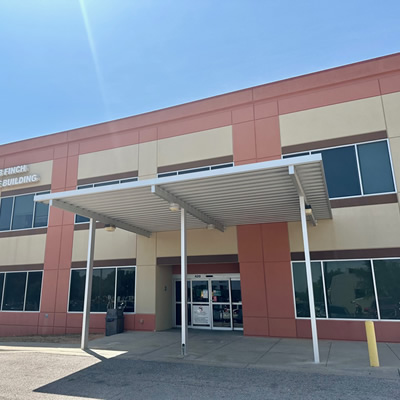
Baylor Scott & White Advanced Heart Failure Clinic - Midland/Odessa
420 E 6th St Ste 102, Odessa, TX, 79761
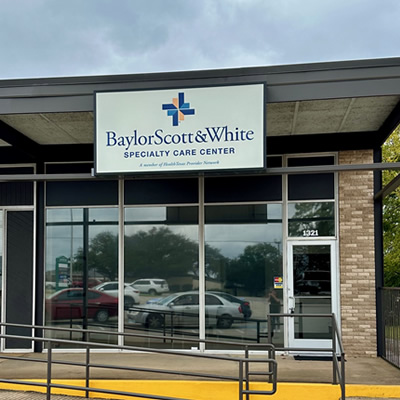
Baylor Scott & White Advanced Heart Failure Clinic - Tyler
1321 S Beckham Ave , Tyler, TX, 75701
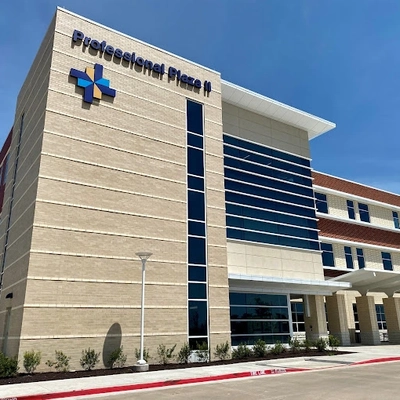
Baylor Scott & White Advanced Heart Failure Clinic - Waxahachie
2360 N Interstate 35E MOB 2, Ste 310, Waxahachie, TX, 75165

Baylor Scott & White Advanced Heart Failure Specialists - Fort Worth
1250 8th Ave Ste 200, Fort Worth, TX, 76104
- Monday: 8:00 am - 5:00 pm
- Tuesday: 8:00 am - 5:00 pm
- Wednesday: 8:00 am - 5:00 pm
- Thursday: 8:00 am - 5:00 pm
- Friday: 8:00 am - 5:00 pm

Baylor Scott & White Advanced Lung Disease Specialists - Dallas
3410 Worth St Ste 250, Dallas, TX, 75246
- Monday: 8:30 am - 5:00 pm
- Tuesday: 8:30 am - 5:00 pm
- Wednesday: 8:30 am - 5:00 pm
- Thursday: 8:30 am - 5:00 pm
- Friday: 8:30 am - 4:30 pm

Baylor Scott & White All Saints Medical Center - Fort Worth
1400 8th Ave , Fort Worth, TX, 76104
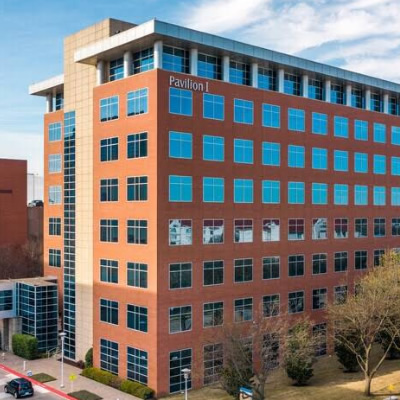
Baylor Scott & White Ambulatory Endoscopy Center
4708 Alliance Blvd Pavilion I, Ste 210, Plano, TX, 75093
- Monday: 7:00 am - 3:00 pm
- Tuesday: 7:00 am - 3:00 pm
- Wednesday: 7:00 am - 3:00 pm
- Thursday: 7:00 am - 3:00 pm
- Friday: 7:00 am - 3:00 pm
Frequently asked questions
-
What does patellofemoral pain syndrome feel like?
Patellofemoral pain syndrome is typically described as dully and achy in nature. During activities, bursts of sharp pain may occur.
-
How long does runner’s knee last?
The timeline varies from person to person, but runner’s knee may recover over 6-12 weeks if caught and treated early but may persist for months in more chronic conditions. Once the pain is gone and you feel like your knee is supporting you properly, you should be able to resume running or other activities that previously triggered symptoms.
-
How can I prevent runner’s knee?
Incorporate strengthening exercises for your hip and thigh muscles into your workout routine so those tissues can support your knees effectively. In addition, ensure you wear shoes specific to your sport, increase your activity level slowly and warm up before exercising.
-
How should I tape a runner’s knee?
Applying kinesiology tape to your knee can improve its stability and help reduce pain when you’re active. There are multiple techniques for taping that can be used to unload the patellofemoral joint.
-
Should I go to the doctor for runner’s knee?
It’s a good idea to see your doctor anytime you’re concerned about knee pain, especially if the pain has not improved after weeks of conservative treatment or there is a sharp, severe pain.
-
Where does runner’s knee hurt?
You’re most likely to feel pain from runner’s knee in the front of the joint around or below the kneecap.

